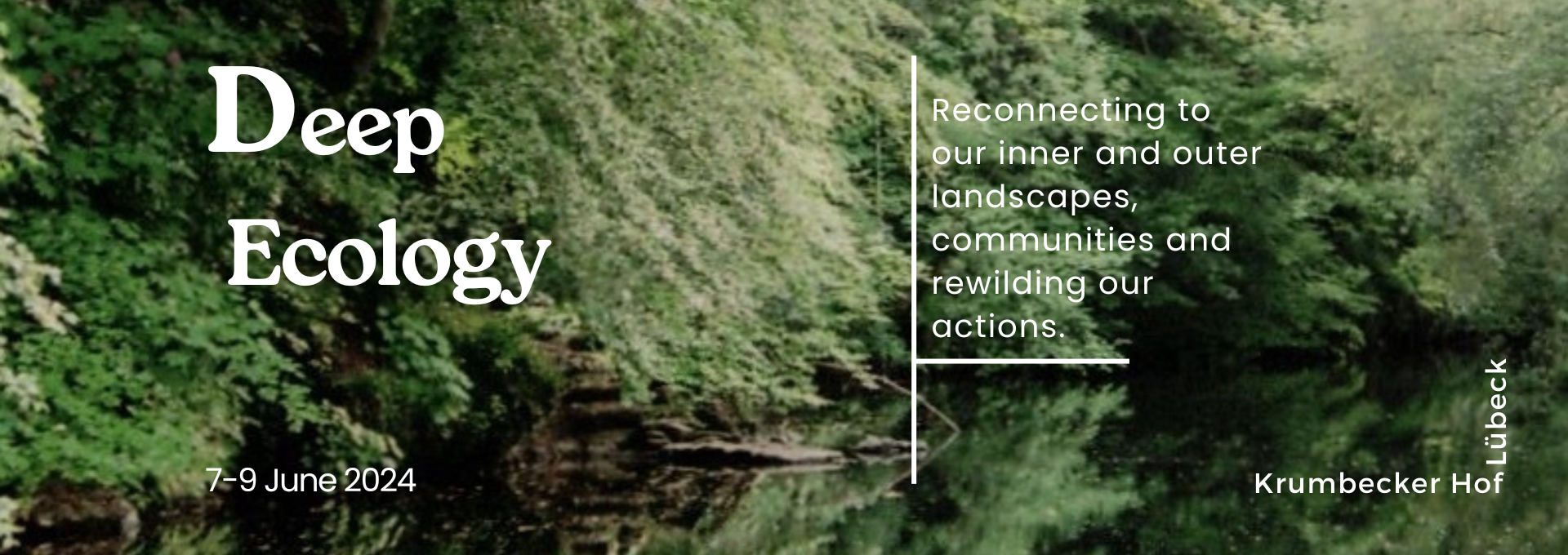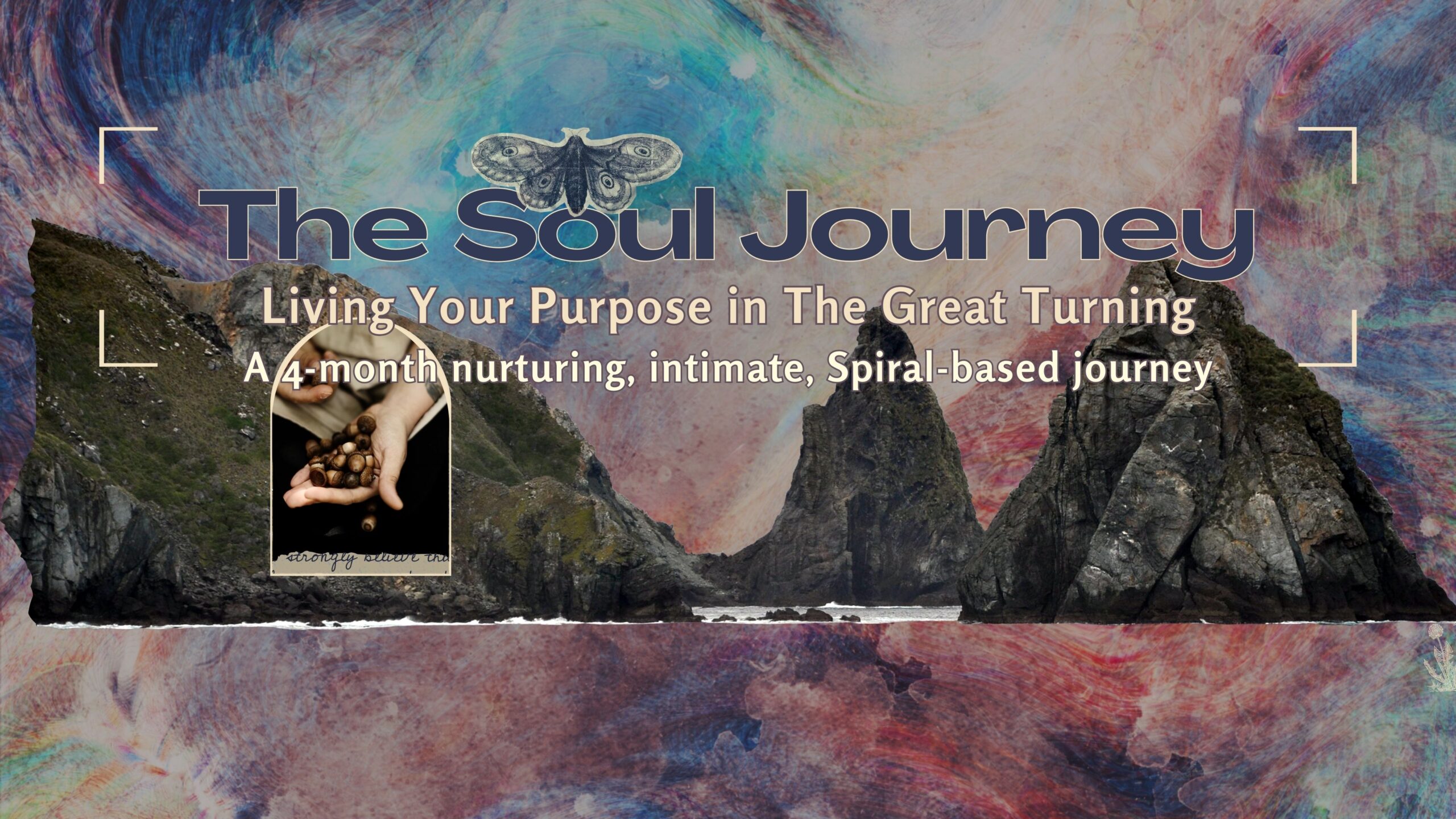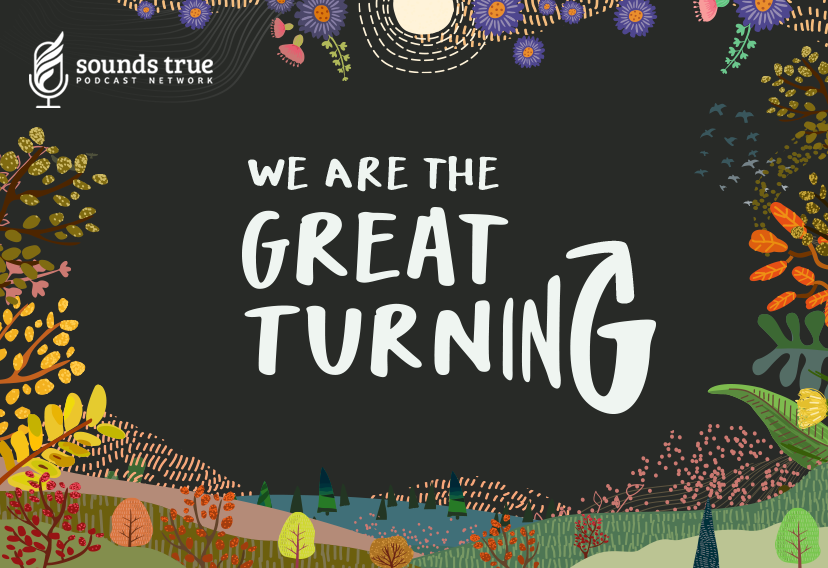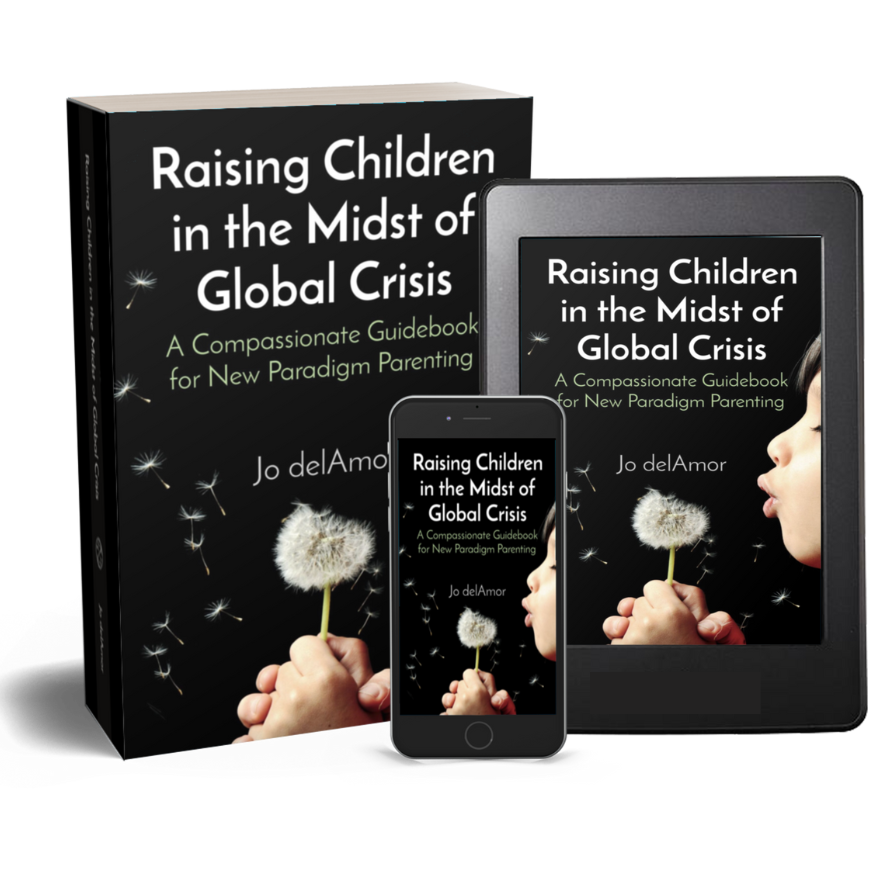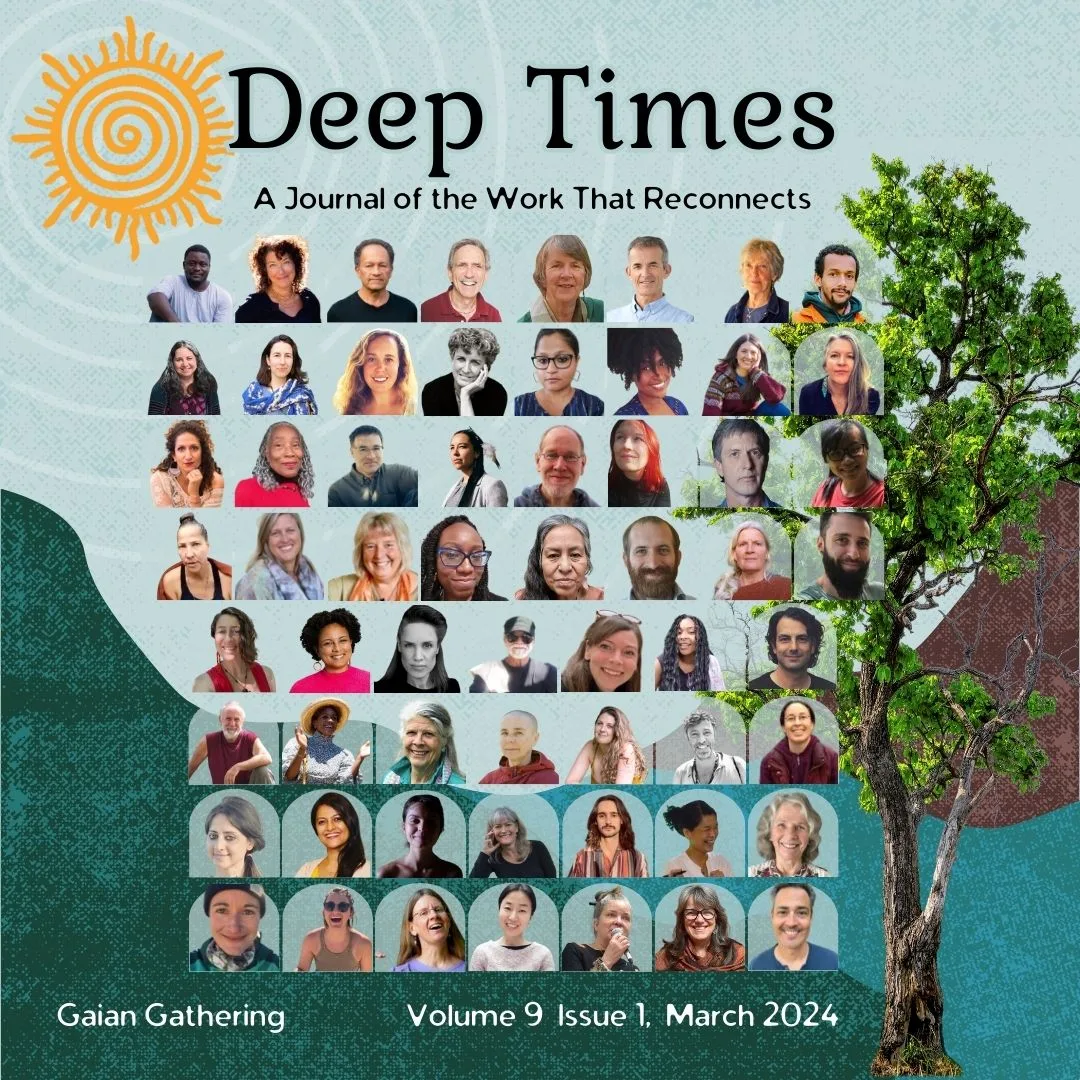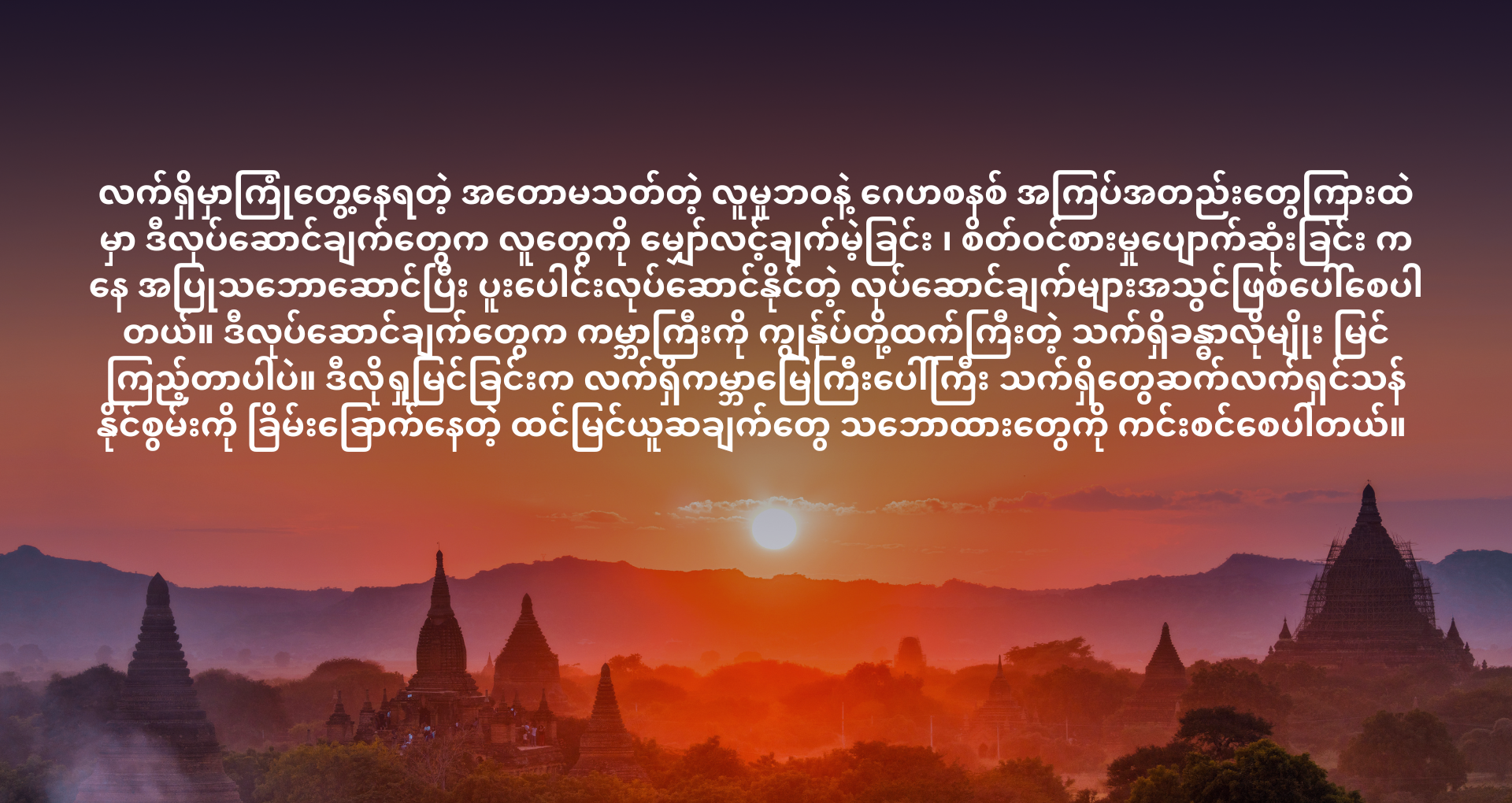Date:
11/01/2014
- Foundational Material
- Seeing with New/Ancient Eyes
- Emerging Facilitators
- Facilitators
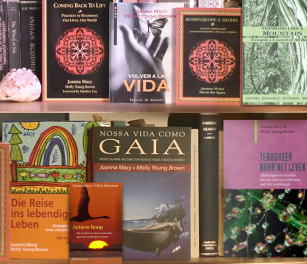
Seeing with New Eyes Teaching Points
from chapter 8 of Coming Back to Life by Joanna Macy and Molly Brown; second edition, published 2014. Please acknowledge the source when sharing this content.
Certain basic concepts are essential to understanding the transition from the Industrial Growth Society to a Life-Sustaining Society. Whatever illustrative material we may use, we always endeavor to make these key points, implicit in Chapters 3 and 4.
- The Industrial Growth Society cannot be sustained. Given the features described below, it is destroying the biological and ecological systems on which all life depends.
- Top-down power. The worldview underlying the Industrial Growth Society sees reality in terms of separate entities, which are in linear, hierarchical, and competitive relation with each other. Hence power has been understood as power-over and win/lose, an assumption that breeds insatiable wants. (See Chapter 3.)
- Unlimited economic growth. Nothing in the universe grows endlessly without limits.
- Maximizing profit. When one variable in a system, e.g. profit, consistently trumps all others, the system cannot stay in balance, goes into “overshoot” and heads toward eventual collapse.
- Externalizing costs and blocking feedback. In order to maximize profit, ecological and human costs of production are off-loaded to third parties, such as taxpayers and the natural world. This distorts both perceptions and accounting of a corporation’s impact. It blocks the feedback that any system needs in order to know the effects of its behavior. Incapacity to receive and register feedback is ultimately suicidal.
- Now, in the Great Turning, we perceive once again the interdependence of all things, and build a Life-Sustaining Society upon that understanding. The shift in perception is a figure-ground reversal: from separate entities to flows of relationship, from substance to process, from noun to verb.
- Power is understood as mutual and synergistic, arising from interaction and generating new possibilities and capacities, within the limits of the biosphere.
- A life-sustaining economy respects the integrity and balance of natural systems on the micro or macro level, and does not alter them through technological innovations, such as genetic or geo-engineering.
- The goal of economic activity is not the profit of a few, but the sufficiency for all, now and into the future.
- Feedback is used to account for the true costs of our behaviors, and also to place responsibility for harm they incur in accordance with the Precautionary Principle.
- Humans are seen as both unique and inseparable from our matrix, the web of life; our genuine self-interest includes that of other beings and the living body of Earth.
- The global crisis is at root a crisis in perception. There is no technological fix.
Advice for conveying these concepts.
- Make time for them. These ideas are implicit in the practices and can easily be made explicit. It is also good to plan a specific time to focus on these concepts, perhaps presenting a mini-lecture. Visual aids, if only a chalk-talk, are helpful.
- Keep it simple. Use only a few analogies to convey this shift in perception.
- At the same time, don’t talk down to your audience. Assume that they are interested, serious, and smart. Don’t be fooled by first impressions.
- Many of these concepts can be made clear in presenting the three stories, e.g. Business as Usual, the Great Unraveling, and the Great Turning (see Chapter 1).
- If your life experience has not made you comfortable directing intellectual discourse, you may want to assemble a series of quotes or short passages that have enriched your own understanding. Perhaps you’ll choose some earlier sections from this book. Then, instead of reading them out like a scripted lecture, distribute copies and have participants take turns reading them aloud, with pauses for reflection, and times for comment.
- Remember that you are not trying to convince people. The only questions you should try to answer are those seeking clarification of what you said. Your role as guide is not to resolve people’s doubts, but to offer food for thought and room for sharing insights.
- When you contrast world views, keep the focus on their psychological and behavioral effects, instead of trying to disprove one theory and prove another.
- Set a time limit. Intellectual discussion gets heady. When time is up, ask participants to stand and stretch, and then move them into an exercise that reflects and grounds these ideas.
- Each guide has a world of experiences to draw from, and distinctive concepts and images to offer, in conveying the interconnectedness of all life. Some take examples from nature, others from spiritual traditions. Guides who are musicians may speak of a shared world of rippling, intersecting vibrations. Those with a philosophical bent may refer to Deep Ecology, the “hundredth monkey” concept, or morphogenetic fields. Lovers of systems theory may talk about co-evolution and emergent properties; community organizers about the synergies unleashed as they help people take charge of their lives; anthropologists and storytellers about ancient myths of co-creation in the web of life. There is no limit to the illustrative material that is here for us to use.
